Jeep JK Tailgate Tire Carrier by Rugged Ridge
0 Installing a suspension lift on your Jeep Wrangler is one of the most exciting and most common upgrades any Jeep owner can think of. Lifting your Jeep results in higher ground clearance, better approach, departure and break over angles, as well as the ability to put on larger tires. Upgrading your tire size will require a new tire carrier to accommodate both the heavier weight and larger diameter. Factory tire carrier of a Jeep JK is made of thin aluminum and designed to carry a maximum weight of 50 lbs. under normal to light trail conditions. Exceeding that weight limit could cause damage to the tire carrier or even the tailgate itself. The Wrangler’s tailgate is comprised of an outer and inner shell, spot welded on the inside. When more weight is introduced to the tire carrier, it pulls the carrier back, along with the outer shell. Eventually, the force will begin to pop the welds along the inner shell, separating both pieces and causing damage to the tailgate.
Installing a suspension lift on your Jeep Wrangler is one of the most exciting and most common upgrades any Jeep owner can think of. Lifting your Jeep results in higher ground clearance, better approach, departure and break over angles, as well as the ability to put on larger tires. Upgrading your tire size will require a new tire carrier to accommodate both the heavier weight and larger diameter. Factory tire carrier of a Jeep JK is made of thin aluminum and designed to carry a maximum weight of 50 lbs. under normal to light trail conditions. Exceeding that weight limit could cause damage to the tire carrier or even the tailgate itself. The Wrangler’s tailgate is comprised of an outer and inner shell, spot welded on the inside. When more weight is introduced to the tire carrier, it pulls the carrier back, along with the outer shell. Eventually, the force will begin to pop the welds along the inner shell, separating both pieces and causing damage to the tailgate.
Before you install larger tires, you need to consider how you’re going to carry that new full size spare. Similar to most aftermarket parts for the Jeep, there are a variety of tire carrier options available.
The first decision to make is whether you would like to retain the stock look, by running a larger tire on the tailgate itself, with heavy reinforcement, or run an aftermarket rear bumper with an integrated tire mount. Both solutions will solve the two major issues involving weight and clearance.
If you decide to go with the tailgate option, there are several manufacturers of the body mounted tire carriers: TeraFlex, Rugged Ridge, MetalCloak, Rock Hard 4×4, EVO Manufacturing, Barricade, Smittybilt.
This option replaces the factory hinges and tire carrier itself with a heavy gauged robust hinge system. The system no longer relies on the tailgate for support and alleviates any stress on the spot welds. It also allows you to adjust the mounting height in order to take into account larger tires and is rated to carry up to a 37” tire.
Body mounted tire carriers retain your Jeep’s one handed, easy access to the rear cargo area.
Compared to a stock spare tire carrier, which weighs less than 10 lbs, an aftermarket body mounted tailgate tire carrier kit will weigh around 50 lbs.
If you’re looking to upgrade your rear bumper and are looking for an even sturdier solution, than a steel bumper with an integrated tire carrier might be a better option.
This system floats independently from the tailgate, requiring you to first swing open the tire carrier, followed by the tailgate, in order to access the cargo area. This solution however introduces a great deal of weight to the rear of the Jeep, with the bumper often coming in at around 100 lbs. and the carrier itself an additional 50 lbs.
I decided to go with a heavy duty Jeep JK tailgate tire carrier option. This step-by-step write-up describes installation of the Rugged Ridge tire carrier kit. The kit includes the hinge casting, wheel mount with lug plate and brake light extension.
You can also watch these installation videos if you prefer: from CJ Off-Road or Rocky X TV. Be aware however that in both videos, I noticed they forget to install the spacer plates on the driver side of the new wheel mount, or simply fail to mention that it needs to be inserted between the wheel mount and tailgate.
(more…)


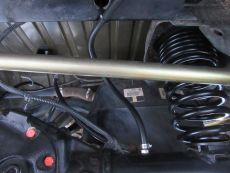 Installing a suspension lift on your Jeep Wrangler is one of the most exciting and most common upgrades any Jeep owner can think of. Lifting your Jeep Wrangler results in higher ground clearance, better approach, departure and break over angles and ability to put on larger tires. That means you can take your Jeep out to the backcountry and enjoy some real offroading. With all that fun, you might eventually find yourself doing a water crossing, or simply playing in mud.
Installing a suspension lift on your Jeep Wrangler is one of the most exciting and most common upgrades any Jeep owner can think of. Lifting your Jeep Wrangler results in higher ground clearance, better approach, departure and break over angles and ability to put on larger tires. That means you can take your Jeep out to the backcountry and enjoy some real offroading. With all that fun, you might eventually find yourself doing a water crossing, or simply playing in mud.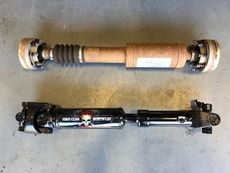 Lifting your Jeep Wrangler JK results not only in higher ground clearance, better approach, departure and break over angles and ability to put on larger tires, but it also causes changes to your driveline as well as steering geometry. Make sure you educate yourself on this topic before installing a lift on your Jeep, especially anything over 3″.
Lifting your Jeep Wrangler JK results not only in higher ground clearance, better approach, departure and break over angles and ability to put on larger tires, but it also causes changes to your driveline as well as steering geometry. Make sure you educate yourself on this topic before installing a lift on your Jeep, especially anything over 3″. Really popular modification that most Jeep owners will do to their Wranglers is to replace the factory front plastic bumper that came with their stock Jeep JK, with a heavy duty offroad bumper. Aftermarket bumpers offer a ton of advantages over the factory bumper, providing better protection for the front of the Jeep, but most of all allowing you to install a winch and additional offroad lighting. Depending on the design, aftermarket offroad front bumper might also increase your Jeep’s approach angle and expose the front wheels, making it easier to put tires on large obstacles. It might also include steel skid plate, protecting the electronic sway bar disconnect motor, if your Jeep has one.
Really popular modification that most Jeep owners will do to their Wranglers is to replace the factory front plastic bumper that came with their stock Jeep JK, with a heavy duty offroad bumper. Aftermarket bumpers offer a ton of advantages over the factory bumper, providing better protection for the front of the Jeep, but most of all allowing you to install a winch and additional offroad lighting. Depending on the design, aftermarket offroad front bumper might also increase your Jeep’s approach angle and expose the front wheels, making it easier to put tires on large obstacles. It might also include steel skid plate, protecting the electronic sway bar disconnect motor, if your Jeep has one.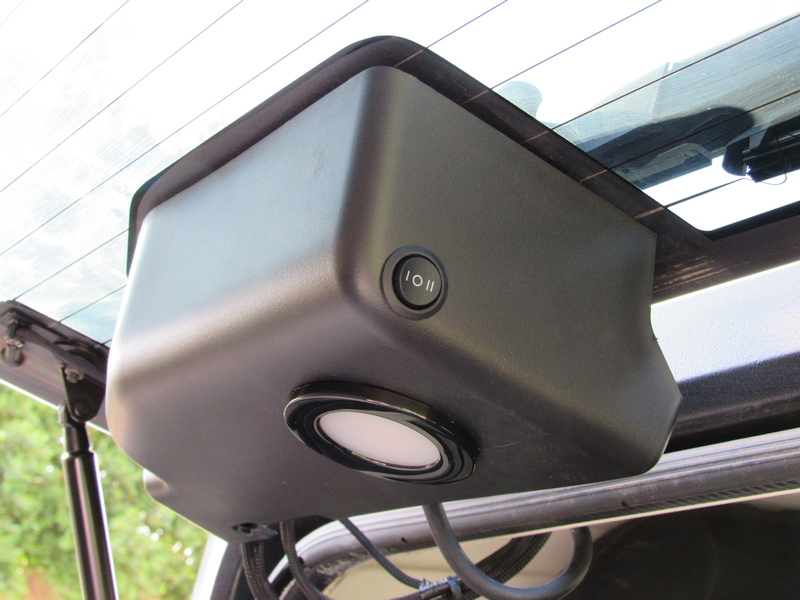 Jeep Wrangler JK unfortunately lacks proper lighting in the rear cargo area. Any Wrangler owner probably experienced a situation when they were loading or unloading their Jeep after dark and could not see anything in the cargo area behind the back seats.
Jeep Wrangler JK unfortunately lacks proper lighting in the rear cargo area. Any Wrangler owner probably experienced a situation when they were loading or unloading their Jeep after dark and could not see anything in the cargo area behind the back seats. The most common situation when extended brake lines are necessary is when you install a lift on your Jeep. The distance between the frame/body of the Jeep and axles increases after a suspension lift, therefore longer brake lines are required during articulation. You might also want to replace your stock rubber brake lines with stainless steel braided brake lines when you realize that the stock lines are deteriorating due to weather conditions (very high temperatures in the summer or lots of salt on the road due to ice and snow in the winter) and when you begin noticing a much softer, spongy brake pedal feel. That feeling is most likely due to moisture getting into the brake lines, which leads to reduced boiling point of the fluid and forming of air bubbles, as well as corrosion of the metal components of the system and consequently contamination of the fluid.
The most common situation when extended brake lines are necessary is when you install a lift on your Jeep. The distance between the frame/body of the Jeep and axles increases after a suspension lift, therefore longer brake lines are required during articulation. You might also want to replace your stock rubber brake lines with stainless steel braided brake lines when you realize that the stock lines are deteriorating due to weather conditions (very high temperatures in the summer or lots of salt on the road due to ice and snow in the winter) and when you begin noticing a much softer, spongy brake pedal feel. That feeling is most likely due to moisture getting into the brake lines, which leads to reduced boiling point of the fluid and forming of air bubbles, as well as corrosion of the metal components of the system and consequently contamination of the fluid. When it comes to Jeep upgrades, brakes are often very low on the list of priorities. After upgrading wheels and installing larger 35″ tires, your stock brakes will have a very difficult time stopping your vehicle, both on the road and especially while negotiating thru an obstacle while offroading. When you increase the size and weight of your tires, you should really think about upgrading your brakes as well. It will improve your confidence while driving and just might help you avoid a collision or an accident. New, upgraded brakes are not cheap, however knowing that your braking power has been increased and stopping distance has been reduced is definitely worth the investment.
When it comes to Jeep upgrades, brakes are often very low on the list of priorities. After upgrading wheels and installing larger 35″ tires, your stock brakes will have a very difficult time stopping your vehicle, both on the road and especially while negotiating thru an obstacle while offroading. When you increase the size and weight of your tires, you should really think about upgrading your brakes as well. It will improve your confidence while driving and just might help you avoid a collision or an accident. New, upgraded brakes are not cheap, however knowing that your braking power has been increased and stopping distance has been reduced is definitely worth the investment. One of the greatest benefits of owning a Jeep is the possibility to drive topless and doorless. Removing the top and doors does however leave the interior of your Jeep exposed and unprotected. One of the items that could be stolen from your vehicle is your garage door remote. Most people have it attached to their sun visor, which makes it very visible to a passer by. This post describes the steps to hide your garage door remote inside one of the plastic panels of your Jeep and use a small, discrete push button switch to activate it.
One of the greatest benefits of owning a Jeep is the possibility to drive topless and doorless. Removing the top and doors does however leave the interior of your Jeep exposed and unprotected. One of the items that could be stolen from your vehicle is your garage door remote. Most people have it attached to their sun visor, which makes it very visible to a passer by. This post describes the steps to hide your garage door remote inside one of the plastic panels of your Jeep and use a small, discrete push button switch to activate it.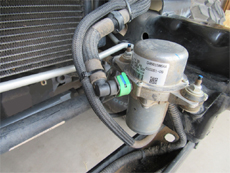 All 2012-2018 Jeep JK models have the vacuum pump installed in a bracket located on the inside of the driver side frame rail right behind the bumper.
All 2012-2018 Jeep JK models have the vacuum pump installed in a bracket located on the inside of the driver side frame rail right behind the bumper.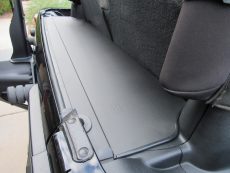 One of the best aspects of owning a Jeep is the ability to drive topless and doorless. The only downside of topless driving is the fact that anything stored in the “trunk” space behind the rear seat is visible and easily accessible. For the last few years, every time I would take the top down, while using my Jeep for daily driving, I would also remove my tool bag and recovery gear form my Jeep and leave it in the garage. I felt that it is not secure in my trunk and it’s way too valuable to risk having it stolen. I finally decided to look into securing the cargo area while driving topless. I did some research looking for a Jeep JK security tailgate enclosure and it seems like there’s two products available that provide exactly what I was looking for. One of them is the Tuffy Security Products Tailgate Security Enclosure and the other is the Bestop Instatrunk.
One of the best aspects of owning a Jeep is the ability to drive topless and doorless. The only downside of topless driving is the fact that anything stored in the “trunk” space behind the rear seat is visible and easily accessible. For the last few years, every time I would take the top down, while using my Jeep for daily driving, I would also remove my tool bag and recovery gear form my Jeep and leave it in the garage. I felt that it is not secure in my trunk and it’s way too valuable to risk having it stolen. I finally decided to look into securing the cargo area while driving topless. I did some research looking for a Jeep JK security tailgate enclosure and it seems like there’s two products available that provide exactly what I was looking for. One of them is the Tuffy Security Products Tailgate Security Enclosure and the other is the Bestop Instatrunk.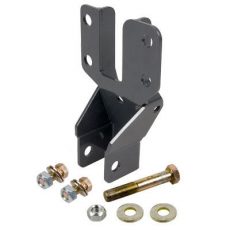 In this post I will attempt to describe a step by step installation of a Synergy Manufacturing Jeep JK front track bar brace. This brace is designed to distribute the increased load the track bar frame side mount encounters on a lifted Jeep or a Jeep with larger size tires. The brace is laser cut and CNC bent from 3/16″ high strength steel. The added track bar bracket thickness prevents the track bar bolt from ovalizing out the stock mount holes, which can lead to vibrations and eventually cause the dreaded death wobble. There are multiple reasons causing the “wobble”, like worn ball joints, loose tie rod ends, worn u-joints, loose adjustment collars on tie rod, drag link or track bar, or worn track bar attachment points on either axle or frame side. Your track bar keeps the axle centered underneath the Jeep when turning and operates under tremendous forces, and the weak stock mounts on both the axle side and the frame side could potentially begin to fail. The holes in the mount might start to become more oval and cause a bit of a play, resulting in shimmies and wobbles. If you use your Jeep as intended and do wheel it, you might encounter a situation where your wheels are blocked by rocks while you try to turn, and your track bar pushes so hard on the mount that it finally brakes it off the frame. It is an extreme scenario, but I have seen it happen. This brace adds strength to the mount and eliminates this weak link in the system.
In this post I will attempt to describe a step by step installation of a Synergy Manufacturing Jeep JK front track bar brace. This brace is designed to distribute the increased load the track bar frame side mount encounters on a lifted Jeep or a Jeep with larger size tires. The brace is laser cut and CNC bent from 3/16″ high strength steel. The added track bar bracket thickness prevents the track bar bolt from ovalizing out the stock mount holes, which can lead to vibrations and eventually cause the dreaded death wobble. There are multiple reasons causing the “wobble”, like worn ball joints, loose tie rod ends, worn u-joints, loose adjustment collars on tie rod, drag link or track bar, or worn track bar attachment points on either axle or frame side. Your track bar keeps the axle centered underneath the Jeep when turning and operates under tremendous forces, and the weak stock mounts on both the axle side and the frame side could potentially begin to fail. The holes in the mount might start to become more oval and cause a bit of a play, resulting in shimmies and wobbles. If you use your Jeep as intended and do wheel it, you might encounter a situation where your wheels are blocked by rocks while you try to turn, and your track bar pushes so hard on the mount that it finally brakes it off the frame. It is an extreme scenario, but I have seen it happen. This brace adds strength to the mount and eliminates this weak link in the system. Any owner of a two-door Jeep Wrangler knows that storage inside of your vehicle is always at a premium (some of you JKU owners might feel the same). And if you’re anything like me and like to be prepared for unexpected situations, you carry a lot of gear in your jeep. Whenever you go wheeling and especially camping you add even more stuff and quickly run out of room inside your Jeep. You have to be pretty creative and use every available square inch of space.
Any owner of a two-door Jeep Wrangler knows that storage inside of your vehicle is always at a premium (some of you JKU owners might feel the same). And if you’re anything like me and like to be prepared for unexpected situations, you carry a lot of gear in your jeep. Whenever you go wheeling and especially camping you add even more stuff and quickly run out of room inside your Jeep. You have to be pretty creative and use every available square inch of space. If you own a Wrangler JK you might have experienced something very unsettling while driving on a freeway. When you go over 60 MPH, you can’t help but notice the hood jumping up and down so violently you think at any minute its going to rip the latches off and come flying up at your windshield. Not everyone notices it and some people simply ignore it. I was ignoring it myself for over three years, even though it always seems to scare the crap out of me! I know that the chances that both latches fail and the secondary metal latch in the front fails also at the same time are slim, but it’s just a distraction that I don’t need while I’m driving my “brick on wheels”. It is funny though how my passengers react to it when I point it out to them…
If you own a Wrangler JK you might have experienced something very unsettling while driving on a freeway. When you go over 60 MPH, you can’t help but notice the hood jumping up and down so violently you think at any minute its going to rip the latches off and come flying up at your windshield. Not everyone notices it and some people simply ignore it. I was ignoring it myself for over three years, even though it always seems to scare the crap out of me! I know that the chances that both latches fail and the secondary metal latch in the front fails also at the same time are slim, but it’s just a distraction that I don’t need while I’m driving my “brick on wheels”. It is funny though how my passengers react to it when I point it out to them…